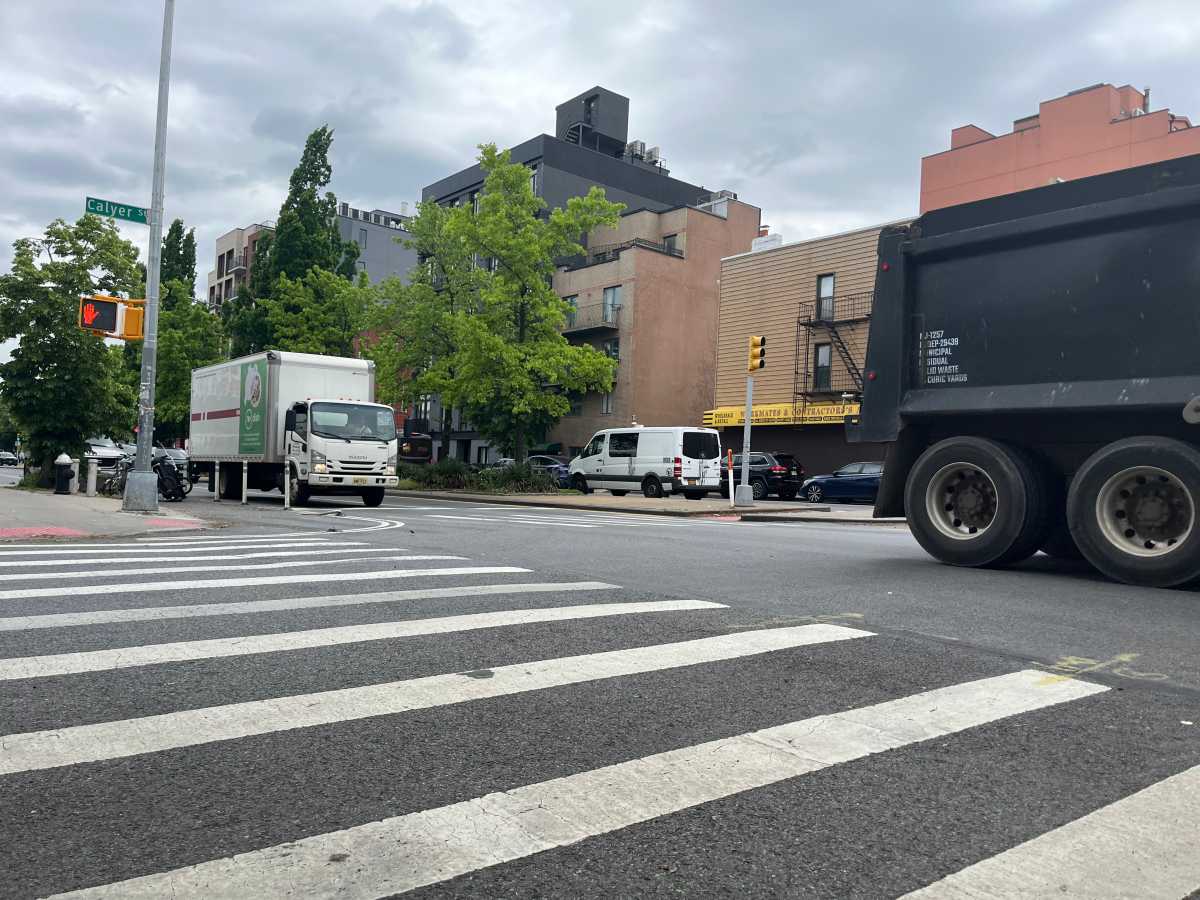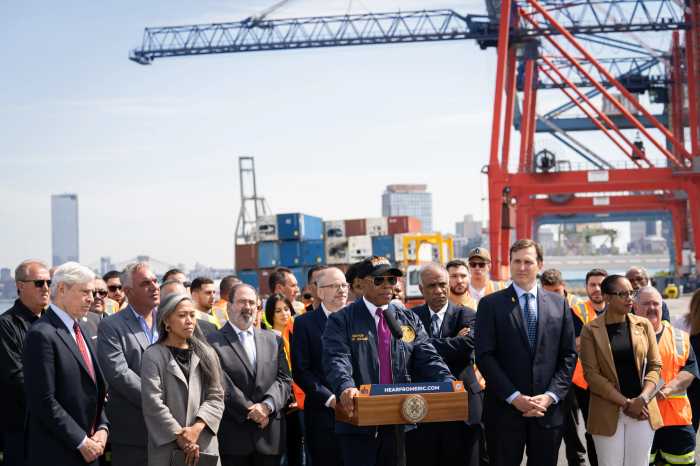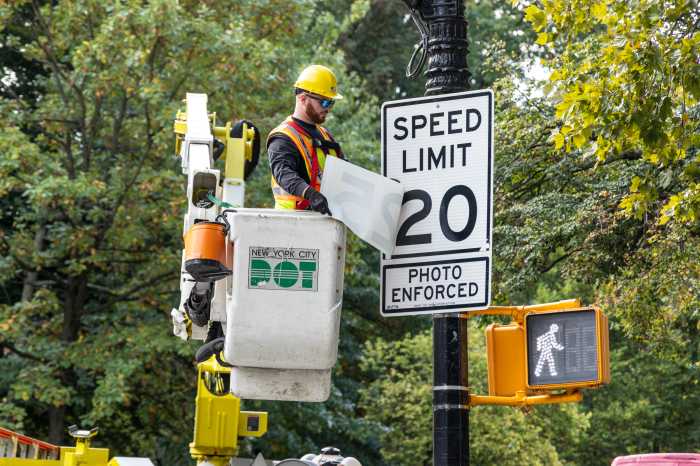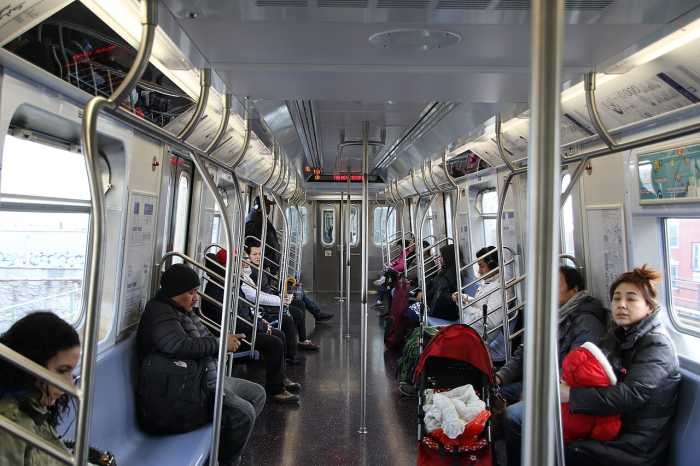Nearly a year after backing away from its plan to overhaul McGuinness Boulevard, the city announced Tuesday its plans for the southern half of the busy thoroughfare — breaking from what it had initially proposed last summer.
Rather than removing a lane of vehicle traffic between Calyer Street and Meeker Avenue, as had been suggested last year, the Department of Transportation will continue the design already in progress on the northern half of the road: protected bike lanes along each curb, with two vehicle traffic lanes open during peak hours. Between 7 p.m.-7 a.m., the right-hand vehicle traffic lane will become a parking lane, meant to slow car traffic on the fast-moving street.
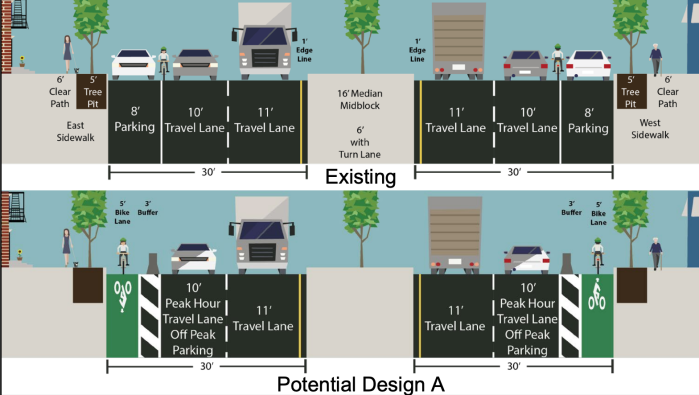
DOT will also revamp the Brooklyn-Queens Expressway entrance ramp at Meeker Avenue, add new pedestrian connection between Bayard Street and Meeker Avenue, and add “conventional” bike lanes to five streets around McGuinness.
Work is expected to begin in September.
The announcement drew outrage from local streets-safety groups and politicians, who have for years advocated for a dramatic revamp of the infamously-dangerous street.
“Greenpoint residents have demanded that Mayor Adams finally address the deadly conditions on McGuinness Boulevard and make our community safer, but he ignored us,” said nine local elected officials, including U.S. Rep. Nydia Velázquez and Council Member Lincoln Restler, in a joint statement. “After repeatedly changing his mind and undermining DOT’s evidence-based redesign, Mayor Adams is going forward with a plan that fails Greenpoint by preserving the most dangerous elements of this roadway that runs through the middle of our community. We will not stop fighting until we successfully prioritize the safety of our neighbors above all else.”
Last summer, after Mayor Eric Adams ordered the department to rethink its initial plan to overhaul McGuinness Boulevard, DOT presented a “compromise” with two different proposals for the northern and southern sections of the road. The northern section, between the Pulaski Bridge and Calyer Street, would get protected bike lanes and retain two vehicle traffic lanes during peak hour, with parking overnight.
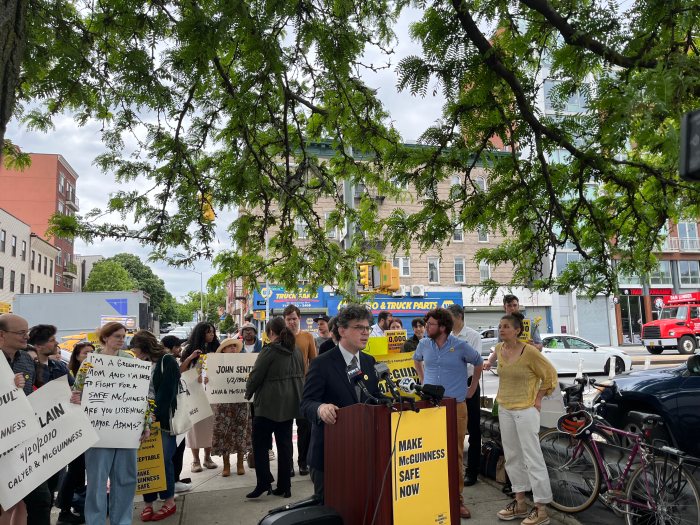
On the southern half of McGuinness, between Calyer Street and Meeker Avenue, the department planned to cut a vehicle lane in favor of parking and a protected bike lane. Work would start on the northern half first, the department said at the time, with the southern half soon to follow.
But DOT didn’t finish work on the northern half before the end of 2023, then announced it would have to finish a traffic analysis on the southern part of the road before it could finalize its plan there. As of May 2024, work still wasn’t done north of Calyer Street, nor was the analysis.
DOT representatives did not immediately say whether or not the analysis had been finished before they announced the stripped-back plan on Aug. 20.
“This redesign for McGuinness Boulevard will make this corridor much safer for everyone, including drivers, pedestrians, and cyclists,” said DOT spox Vin Barone. “Based on community feedback, NYC DOT will be extending the protected bike lane from Calyer Street to Meeker Avenue while also delivering a new network of bike lanes, better connecting cyclists to Meeker Avenue and points south, and adding sidewalk extensions at streets intersecting McGuinness Boulevard.”
When asked for comment, a representative from Adams’ office referred Brooklyn Paper to DOT.
The wide four-lane road, which locals say lends itself to speeding vehicles and dangerous drivers, saw 229 crashes with injuries between 2015 and 2019, according to a 2023 DOT presentation. Most pedestrian injuries came when victims were truck by drivers as the pedestrian crossed the street with the signal.
Since then, roughly 88 crashes hav been reported along the road, according to CrashMapper, including 58-year-old cyclist Liem Nhan, who was killed by a box truck driver in 2019, and P.S. 110 teacher Matthew Jensen in 2021. Jensen’s death galvanized the community and inspired the creation of streets-safety group Make McGuinness Safe. It also inspired then-mayor Bill de Blasio to pledge $39 million to redesign the street.
The “final” plan announced and quickly axed last spring would have cut a vehicle traffic lane in both directions down the entirety of McGuinness Boulevard. At the time, DOT said plan was the most widely-supported of the three variations the department had put forward.
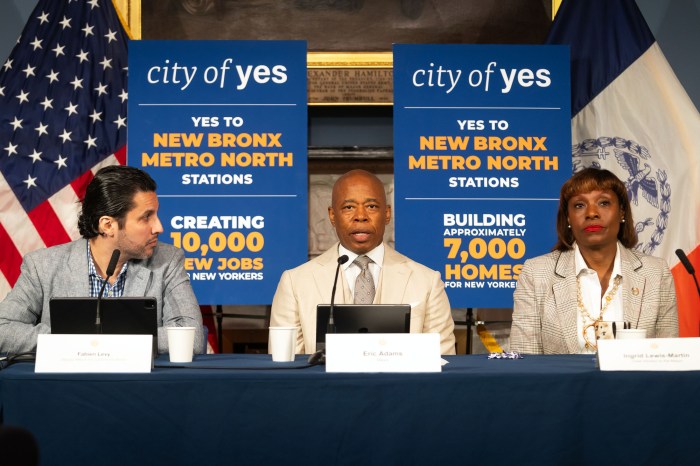
But opponents — headed by Broadway Stages — criticized the plan, claiming it would negatively impact local businesses. It was their voices — and that of mayoral advisor Ingrid Lewis-Martin — that reportedly inspired Adams to do an about-face last year.
Some said even the compromised plan would harm the community.
“The community is deeply concerned about the impact of diverted traffic on our residential side streets, delayed emergency response times, and many other issues affecting residents and businesses – not only in Greenpoint, but in neighboring areas such as Williamsburg, Bushwick, Long Island City, Maspeth, etc,” Keep McGuinness Moving said in August 2023. “We will continue promoting our ideas and ideals that are more productive and safer.”
After the Aug. 20 announcement, Make McGuinness Safe said DOT had “broken their promise” to Greenpointers.
“We asked the city to protect our community — pedestrians and cyclists, children and elders — from future trauma after decades of suffering the consequences of an unneccessary speedway dividing our neighborhood,” the group said. “Instead, we are losing parking, abandoning loading zones, and gaining an unsafe, unprotected bike lane adjoining a highway.”


